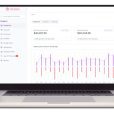In a move that impacts the future of wearable sensing and edge computing, Australian motion-analysis company dorsaVi (ASX:DVL) has secured exclusive worldwide rights to a transformative memory technology developed by Singapore’s Nanyang Technological University (NTU). The deal grants dorsaVi access to nine families of resistive random-access memory (RRAM) patents designed to power the next generation of smart, energy-efficient devices across healthcare, AI, and the Internet of Things (IoT).
“This licence gives us the foundation to build the next generation of intelligent, low-power sensing platforms,” said dorsaVi CEO Andrew Ronchi. “We’re not just upgrading our products—we’re redefining what’s possible with wearables.”
Tapping a Global Need for Smarter Sensors
RRAM is a next-gen memory technology praised for its high-speed, low-power performance, and durability – traits that make it ideal for real-time, on-device AI processing. By reducing cloud dependency and enhancing data security, RRAM is especially suited to wearable applications in health monitoring, sports, and safety-critical industrial settings.
The tech will enable smaller, more powerful devices with longer battery life, faster feedback, and enhanced usability in remote or continuous monitoring environments.
Embedded AI with Edge Efficiency
The integration of RRAM into dorsaVi’s existing FDA-cleared sensor platform is expected to be transformational. Initial development will pair RRAM with legacy NAND flash in a hybrid memory system, before transitioning to full RRAM-based memory. This move promises real-time responsiveness, extended battery life, and a compact AI-processing footprint – without significantly increasing production costs.
This positions the sensors to operate independently of cloud infrastructure, highlighting improvements in data privacy, latency, and device durability.
Strategic Platform for Expansion
The deal lays the groundwork for expansion into high-value verticals such as industrial automation, AI-powered robotics, drones, and AR/VR.
dorsaVi now has a clear pathway to new markets, and a capital-light structure that supports growth without impacting the existing operations.
dorsaVi will access advanced simulation tools as part of the agreement, significantly accelerating product development and reducing integration risk. These tools will allow engineers to simulate RRAM performance pre-fabrication, minimising cost and time to market.
Powered by World-Class Research
The technology stems from over a decade of R&D led by Professor Lew Wen Siang and his team at NTU Singapore’s School of Physical and Mathematical Sciences. Their innovations include:
- Defect-tailored memory layers for ultra-stable low-voltage operation
- Novel plasma-treated interfaces to enhance endurance and thermal resilience
- Compatibility with standard mass manufacturing processes for rapid scaling
Strong Institutional Backing
The licence will be held by a new dorsaVi subsidiary, with manageable staged payments totalling SGD$1.1 million over 12 years. The company has also secured firm bids of A$2.4 million from new and existing sophisticated investors, helping fund integration and working capital.
A two-tranche capital raise is already underway at $0.013 per share, a 4.02% discount to the 15-day VWAP, with settlement of the first tranche expected by 25 June 2025.
Four Key Benefits for dorsaVi
- Smarter, faster sensors – 10,000x lower read latency and improved real-time processing
- Lower costs, higher margins – Estimated A$150,000 in annual cloud cost savings
- Built-in edge AI – On-device analysis for motion, posture, and fall detection
- New markets unlocked – Logistics, agriculture, industrial IoT, and next-gen wearables
Licence Scope and Outlook
The licence grants exclusive global rights to apply RRAM across healthcare, AI, and IoT (excluding MedTech). dorsaVi has also secured territorial protections in key markets including the USA, Europe, Singapore, and Australia.
With RRAM positioned as a cornerstone for neuromorphic computing, in-sensor AI, and autonomous edge devices, dorsaVi is aiming to be at the leading edge of how we monitor movement, health, and performance in real-time.
- SKS Technologies Moves to Expand NSW Footprint With Delta Elcom Acquisition - November 18, 2025
- Monash University Partners with HITIQ to Advance Concussion Science Using Smart Mouthguards - November 7, 2025
- Pivotal Metals Secures $5.4M to Fast-Track Quebec Drill Program - October 27, 2025













Leave a Comment
You must be logged in to post a comment.